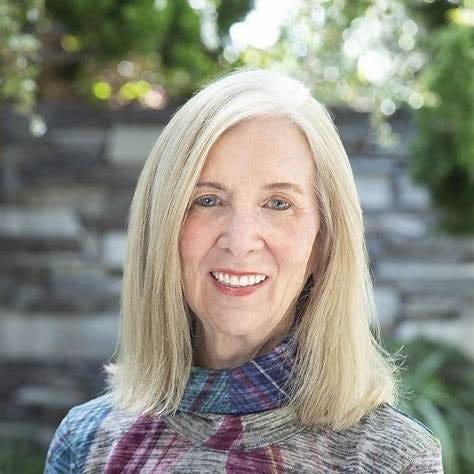Market Foresight Meets Empathy: Inside an $800M Exit
Arlene Harris turned overlooked users into a billion-dollar business. Learn from a masterclass in quiet innovation, empathy, and market foresight.
This audio was recorded by AI:
I’m always drawn to the stories that don’t follow the usual playbook—the entrepreneurs who saw value where others didn’t, who built something meaningful by paying attention to the margins. In a world obsessed with disruption, few embody that quiet, strategic brilliance better than Arlene Harris.
Known as the “First Lady of Wireless,” Harris didn’t chase trends—she anticipated needs. While the rest of the tech world raced toward flashier, younger markets, she focused on seniors, caregivers, and those often left behind by innovation. Her real genius wasn’t just who she built for—it was how she built: patiently, empathetically, and with relentless clarity of purpose.
Hers is more than just a remarkable entrepreneurial journey. It’s a blueprint for how to innovate with heart, serve with precision, and grow in a way that actually lasts. For anyone trying to balance impact with profitability—or simply looking for the next great business case study—Arlene Harris is a name worth knowing.
Seeing What Others Miss
When Harris co-founded GreatCall (now known as Lively) in 2005, she didn’t chase the cutting edge—she went back to basics. The Jitterbug phone, a flagship product under the brand, was ridiculed by many in the industry: it had large buttons, a simple interface, and none of the bells and whistles that defined the mobile arms race of the mid-2000s. But what it did have was product-market fit with a massive and growing demographic: aging Americans who didn’t want a smartphone—they wanted a lifeline.
Harris saw what the industry refused to: that the 65+ market had spending power, real needs, and zero interest in being condescended to by tech companies.
Ask yourself: Who are we not building for? Where does the market see low growth but miss high value?
Build for Use, Not for Flash
Where other companies obsessed over features, Harris obsessed over outcomes. GreatCall’s success wasn’t just because it made phones easier to use—it was because the company bundled hardware with concierge health services, 24/7 human support, emergency response, and caregiver connectivity.
This high-touch, human-centered strategy proved commercially brilliant. By simplifying the user experience and integrating high-value services, GreatCall dramatically reduced customer attrition, increased customer lifetime value (CLV), and carved out a dominant niche. When Best Buy acquired it for $800 million in 2018, it wasn’t buying a phone company. It was buying trust.
Simplicity is not a compromise—it’s a competitive advantage. Especially when paired with high-value services that generate long-term engagement.
Ask yourself: Are we optimizing for adoption or complexity? Do we serve our users—or just entertain them?
Innovating with Purpose—And Discipline
It’s easy to glamorize visionaries, but Harris’s success is rooted in operational excellence. Before GreatCall, in the 1980s, she cofounded Cellular Business Systems Inc. (CBSI), the first company to automate billing and customer care for wireless providers—a move that helped professionalize an entire industry. She didn’t just invent; she scaled smartly, sold when it made sense, and built her next company with the same principles.
Too many tech entrepreneurs are fixated on going viral or chasing billion-dollar valuations. Harris, by contrast, built businesses with real revenue, measured growth, and defensible positioning. She prioritized partnerships, stayed deeply attuned to her customers, and always kept the mission tightly aligned to the market need.
Vision without execution is just daydreaming. Harris succeeded because she married bold ideas with ruthless focus.
Ask yourself: Are we building the right thing—or just building fast? Can we clearly articulate the problem we solve, for whom, and why it matters?
A Business Model for Real-World Impact
GreatCall began with simple, senior-friendly phones and emergency response services but quickly evolved into a platform for preventive healthcare. Beyond basic alerts, it used predictive algorithms and 24/7 monitoring to anticipate risks like falls or medication lapses.
By helping seniors age safely at home, GreatCall delivered real savings to families, insurers, and the broader healthcare system. It bridged the gap between clinical care and daily life through data-driven tools and human-centered design. The result was early intervention instead of emergency reaction. In doing so, GreatCall became more than a tech company—it became a model for how consumer technology can improve public health.
This positioned GreatCall at the convergence of three massive industries: healthcare, aging, and mobile tech. It also made the company highly acquisition-worthy to Best Buy, which saw in Harris’s model a new strategic direction—one where a retail company could become a health and safety service provider.
Future-proof businesses don’t just chase current trends—they position themselves at the intersection of enduring needs.
Ask yourself: What long-term demographic or policy shifts are we aligning with? How does our value scale as society evolves?
Lessons for Today’s Leaders
Harris’s story isn’t just impressive—it’s a case study in market foresight, customer obsession, and operational discipline. Her work offers lasting lessons for anyone building durable, impact-driven businesses. For today’s founders, executives, and strategists, her journey offers five powerful takeaways:
Serve the ignored. There’s massive upside in building for people others overlook.
Design for outcomes, not optics. Make things that are intuitive, not just impressive.
Own the ecosystem. Integrate services and support around the core product experience.
Scale with purpose. Grow intelligently, sell when right, and don’t mistake valuation for value.
Be early—and patient. Timing matters, but perseverance matters more.
The Arlene Harris Challenge
In a tech world filled with short attention spans and VC-fueled velocity, Harris stands as a quiet rebuke to the idea that innovation needs to be loud to be meaningful. These are the stories I love —the ones that don’t follow the hype cycle, but instead deliver real impact by seeing what others overlook.
Harris proves you don’t have to chase the newest thing—you just need to accept the oldest truths: people want to be seen, understood, and empowered.
So the next time your product team is in a room full of whiteboards, wireframes, and dashboards, consider asking:
1. Who Are We Overlooking—And What Do They Actually Need?
Are we solving a real problem for a group that others ignore? There’s often more opportunity in quiet markets than crowded ones. Look for the unmet need, not the noisy trend.
2. Does This Work in the Real World—Or Just on Paper?
Is what we’re building simple, useful, and intuitive? Customers don’t care about impressive features—they care about whether it helps them get something done.
3. What Surrounds the Product—And Are We Owning That Too?
Are we designing the full journey? The product is just one piece. Support, onboarding, service, and tools matter just as much in shaping the experience.
4. Are We Growing Toward Substance—Or Just Size?
Is our growth strategy making the business stronger, or just making it look bigger? Chase traction that compounds—not vanity metrics or short-lived spikes.
5. Are We Willing to Be Early—And Stay the Course?
Are we acting on conviction, not consensus? If we’re ahead of the curve, we need the patience to outlast the noise and build something enduring.
Give these questions some serious thought and you may just be following in the footsteps of a visionary entrepreneur most people have never heard of. The kind who spots overlooked problems, builds quietly, and earns loyalty by delivering real outcomes—not hype. These builders don’t chase trends; they shape markets. They succeed not by being loud, but by being early, right and persistent.
To learn more about quiet innovation, underserved consumers and building a legacy, visit Outthinker.com.






